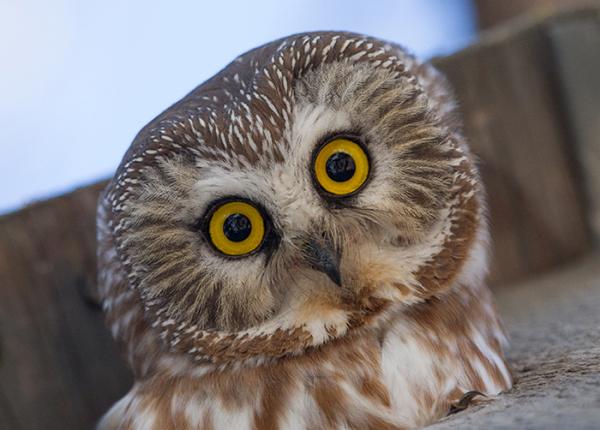I thought you guys may like to know a bit about this. Most stories about the current state of nature are quite depressing, but this one is quite the opposite!
The Eurasian Eagle Owl was once abundant throughout western Europe, but after centuries of hunting they were gone from many countries. After they went basically extinct in Germany in the 1960s the Germans set up a conservasion program which lasted from the 1970s to the 1990s. Because of this there are now 2900 to 3300 Eurasian Eagle Owls in Germany.
In the Netherlands the owls had also completely disappeared, but soon the German owls started crossing the border. In 1997 the first Eagle Owl was spotted. Some years later, they were breeding and now there are possibly more than 100 individuals in the country, with no signs of the growth slowing down.
In one spot where they have been breeding for 13 years, an organisation has installed cameras to invade their privacy and for us to enjoy. There are 4 owlets right now, which is quite a lot, because the average amount of eggs laid by this species is 2.9. Recently the owlets have been ringed (which is were the photo comes from) and they are growing really big already.
That is the story basically. I am Dutch, so this all is very exciting (side note: if someone from Germany has another good article about this, please let me know!). Also, the Owls were once native to for example the UK, so I am hoping that we will see more good reintroduction news in the future!


Glad you liked it!
About the ecology, I can’t point to anything particular that makes them thrive now. Something interesting that I left out of the post which I read in the article that wasn’t available online, was that the owls eat different food in the Netherlands than in Germany. In Germany there are a lot of rodents, but in the Netherlands the rodents populations are smaller because of very intensive agriculture. Because of this, the Dutch owls eat more other species (they unfortunately did not specify what those species were).
One trend that is visible in nature in Western Europe is that smaller fauna are struggling, but larger species are doing really well. In the Netherlands we have seen reintroductions of not only the Eagle Owl, but also the white-tailed Eagle, the beaver, the otter and the wolf (and maybe the lynx too in the near future). On top of that we have seen big population increases of cranes, geese, deer and probably some more that I don’t know about. This is mostly because of conservation efforts and hunting being banned.
And I didn’t know that about the Kattenstoet, sounds very interesting!
That is good to hear about all the species. Many seem to be quite resilient if we actually give them a chance.
I like hearing about the differences between the European countries. I felt we pretty much just got the Magna Carta, Columbus, the French were our friends in the Revolution, and the 2 World Wars, mainly the second one, and that is about it for our European education. There are so many diverse cultures and ecosystems we don’t hear about unless we seek them out ourselves, and even then, my brain keeps going back to thinking about it as one generalized place.
I watched a video of the modern Kattenstoet, and that seems much more pleasant. It’s happening in a few days from now I believe as well. They do it every 3 years.